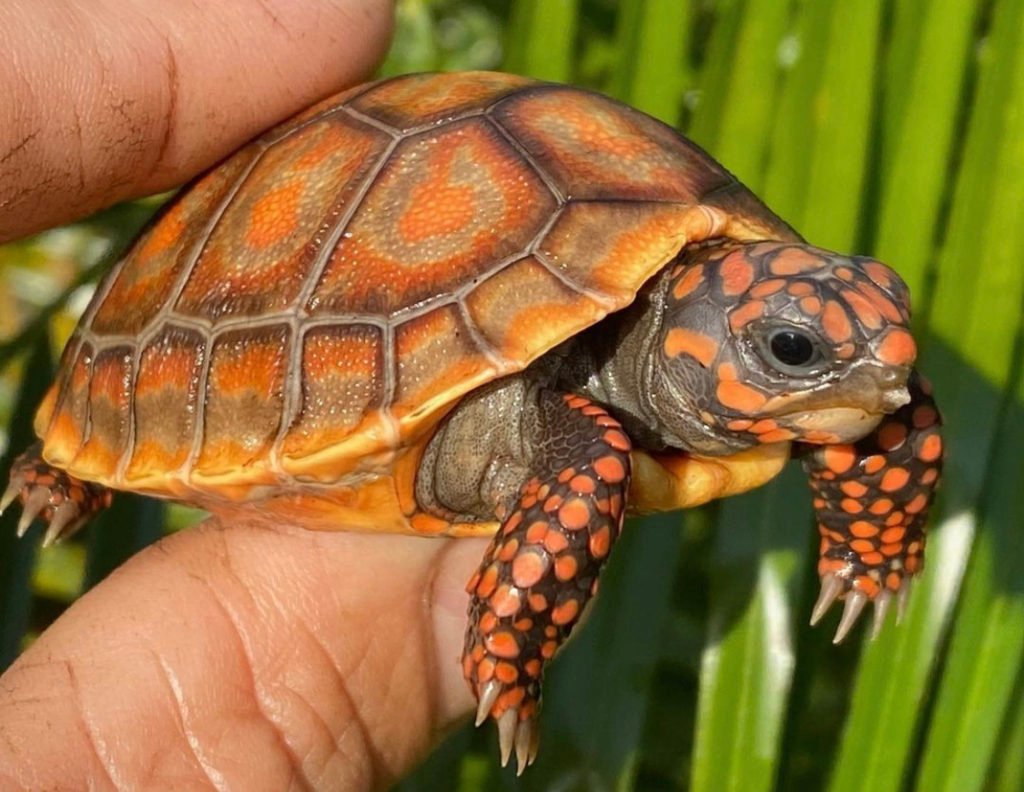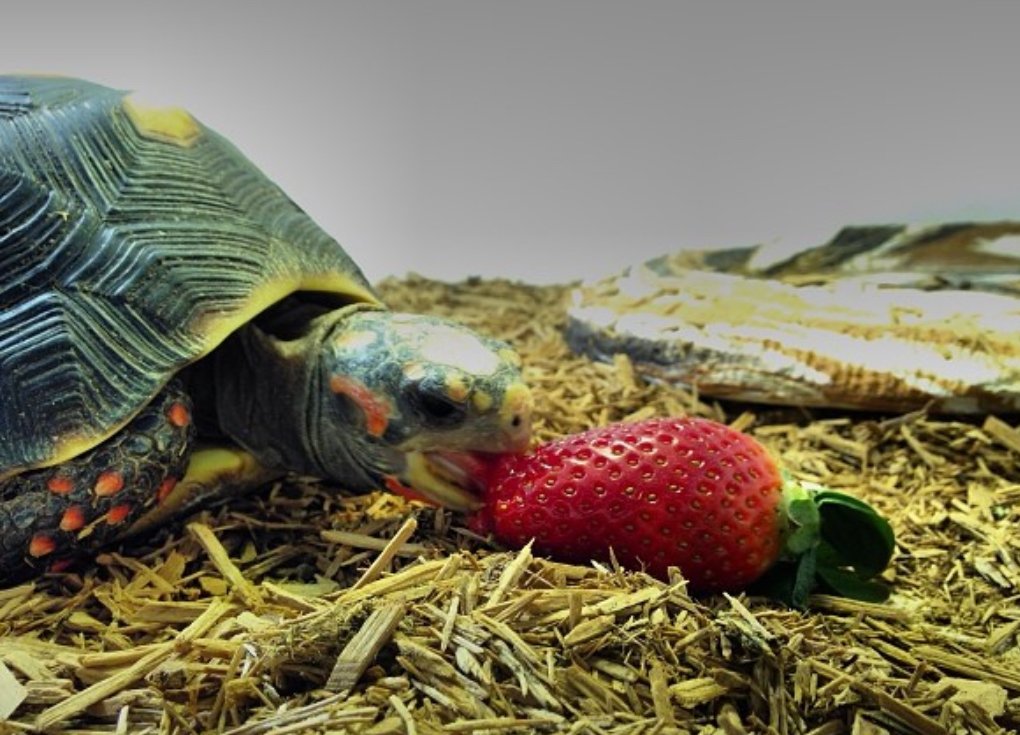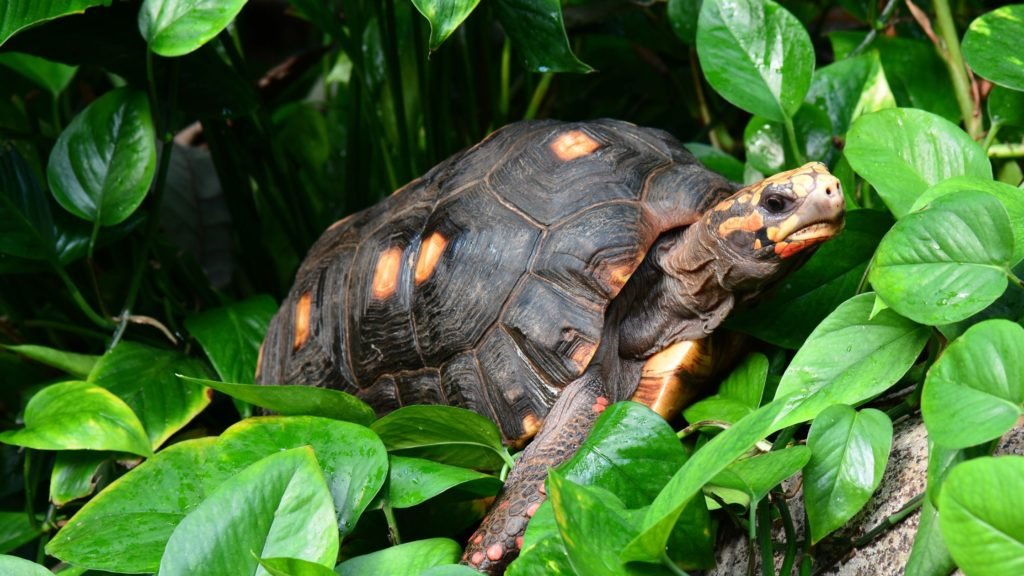The red-footed tortoise (Chelonoidis carbonarius) is a small to medium-sized tortoise native to South America. It is named after the distinctive red and orange coloring on its legs and feet. These tortoises are famous for pet owners due to their attractive appearance, gentle temperament, and relatively low maintenance requirements. However, potential owners must know the responsibilities and considerations of caring for a red-footed tortoise. This article will explore various aspects of red-footed tortoise care, including diet, size, price, habitat, and lifespan.
Red Footed Tortoise for Sale
Where to Buy Red-Footed Tortoises
Red-footed tortoises can be purchased from various sources, including pet stores, breeders, and online retailers. It would help if you did your homework and only bought from a reputed dealer to guarantee a healthy and happy tortoise. Local reptile expos and shows are good places to find red-footed tortoises and connect with breeders and other owners.
Things to Consider Before Buying a Red-Footed Tortoise
Before purchasing a red-footed tortoise, it is vital to consider the commitment and responsibility involved in owning a tortoise. These animals can live for several decades and require a specific diet, housing, and environmental conditions. Additionally, owners should be prepared for potential health issues and the financial cost of veterinary care. It is essential also to consider whether the tortoise is a good fit for your lifestyle and living situation.
Legal Requirements for Owning a Red-Footed Tortoise
In some areas, there may be legal requirements for owning a red-footed tortoise. These can vary by country, state, or city, so it is important to research local laws and regulations. Permits or licenses may sometimes be required to own a red-footed tortoise. Obtaining necessary permits or licenses is vital and ensures the tortoise is legally acquired. It is also important to avoid purchasing wild-caught red-footed tortoises, as this can contribute to declining wild populations.

Red Footed Tortoise Diet
Natural Diet of Red Footed Tortoise
In the wild, red-footed tortoises are omnivorous and eat a variety of plant and animal matter. Their diet includes fruits, vegetables, grasses, flowers, and invertebrates such as snails, slugs, and insects. They also consume carrion and occasionally small vertebrates such as rodents and birds.
Commercial Diets
Commercial diets are available in pellets, canned, and frozen foods for pet red-footed tortoises. These diets are formulated to meet the nutritional needs of tortoises and often contain a mix of plant and animal matter. Choosing a high-quality commercial diet appropriate for the tortoise’s age and size is vital.
Feeding Frequency and Amount
The red-footed tortoise needs a diet rich in nutrients to grow healthy. Young tortoises require more protein and should be fed more frequently than adult tortoises. Adults can be fed every other day or every few days, depending on their activity level and metabolism. Overfeeding can lead to obesity and health issues, so monitoring the amount of food given and adjusting as needed is essential. Additionally, fresh water should always be available for drinking and soaking.

You may Also Interest: The Big Headed Turtle: A Unique Pet Option
Red Footed Tortoise Size
Average Size of Red Footed Tortoise
Red-footed tortoises are medium-sized species of tortoise, with males typically larger than females. Adult males can reach a carapace length of up to 16 inches (40 cm), while females are slightly smaller and usually max out at around 13 inches (33 cm). The weight of adult red-footed tortoises can range from 5 to 15 pounds (2.3 to 6.8 kg), depending on their age and sex.
Factors that Affect the Size of Red Footed Tortoise
Several factors can affect the size of red-footed tortoises. Genetics plays a significant role, as certain bloodlines may be predisposed to the larger or smaller size. Diet is also essential, as a balanced diet with appropriate nutrients can support healthy growth and development. Environmental factors such as temperature, humidity, and lighting can also impact growth and size.
How to Measure the Size of a Red Footed Tortoise
The length of a red-footed tortoise’s carapace is usually utilized as a metric for its overall size. That is the length of the top part of the shell, measured from the front edge to the back edge. The plastron length, the length of the bottom part of the shell, can also be calculated for additional information. You can determine the correct size of the shell using a ruler or measuring tape. It is essential to measure the tortoise when it is fully extended and not in a curled position.
You may Also Interest: Meet the Red Eared Slider Turtle: A Popular Pet You Need to Know
Red Footed Tortoise Habitat
Natural Habitat of Red-Footed Tortoises
Red-footed tortoises are native to the rainforests and savannas of South America. To thrive, they need a combination of high humidity, moderate temperatures, and abundant vegetation.
How to Recreate a Suitable Habitat for Red-Footed Tortoises
A small water dish for bathing and drinking and a basking place with a heat source is also needed. That includes providing a spacious enclosure with a substrate for burrowing and retaining moisture, such as coconut coir or sphagnum moss. The section should also have a shallow water dish for soaking and drinking and a basking area with a heat source to maintain an appropriate temperature gradient.
Tips for Maintaining a Healthy and Safe Habitat for Red-Footed Tortoise
Regular care and monitoring keep red-footed tortoises healthy and safe. To avoid bacteria growth, monitor temperature and humidity, provide adequate illumination, and clean the enclosure periodically. Nutrition requires a diversified and balanced diet. Safeguarding the area from sharp items and hazardous plants can also avoid injuries and disease. Red-footed tortoise keepers may create a healthy environment by following these guidelines.
Red-Footed Tortoise Price
Average Price of Red-Footed Tortoises
The price of a red-footed tortoise can vary depending on several factors, including age, size, color, and breeding. A young red-footed tortoise can cost between $150 and $300, while an adult can range from $200 to $500. Prices can be higher for rare or exotic color morphs, such as the albino or high-yellow varieties.
Factors that Affect the Price of Red-Footed Tortoises
Several factors can affect the price of red-footed tortoises. The age and size of the tortoise can impact the price, with larger and older specimens typically being more expensive. Breeding and lineage can also affect the tortoise’s shell’s cost, color, and pattern. Additionally, availability and demand can influence the price of red-footed tortoises.
Where to Find Red-Footed Tortoises for Sale at a Reasonable Price
Red-footed tortoises are available at pet stores, reptile expos, and online retailers. However, it is crucial to research and buy from a reputable seller to ensure the tortoise is healthy and legally obtained. Buying from a breeder can also provide more information about the tortoise’s lineage and health history. Shopping around is the best way to ensure you get a healthy, well-cared-for tortoise at a fair price.
You may also interest: Axolotl Melanoid: Understanding the Unique Coloration of the Axolotl

Red-Footed Tortoise Care
Housing Requirements for Red-Footed Tortoises
Red-footed tortoises require a suitable enclosure providing enough space to move around and bask. A terrarium or outdoor enclosure should be at least three times the size of the tortoise’s shell length and have a substrate for burrowing. The enclosure should also have hiding places, a shallow water dish for drinking and soaking, and a basking area with a heat source.
Temperature and Humidity Requirements for Red-Footed Tortoises
Red-footed tortoises require specific temperature and humidity levels to maintain their health and well-being. The temperature should be kept between 80-90°F (27-32°C) during the day and around 70-75°F (21-24°C) at night. Humidity should be kept between 50-70%, with misting or soaking the tortoise in water to maintain proper hydration and skin health.
Health and Hygiene for Red-Footed Tortoises
Red-footed tortoises must be kept healthy and clean. Tortoises need regular reptile vet visits to be healthy. Regularly cleaning and sanitizing the enclosure, food and water dishes, and other equipment prevents hazardous bacteria and parasites. A well-balanced diet with leafy greens, vegetables, fruits, and no protein can help prevent shell abnormalities and organ damage.
Red-Footed Tortoise Lifespan
Average Lifespan of Red-Footed Tortoises
Red-footed tortoises have an average lifespan of around 50 years, although they can live longer with proper care.
Factors That Affect the Lifespan of Red-Footed Tortoises
Several factors can affect the lifespan of red-footed tortoises, including genetics, diet, environment, and healthcare. Tortoises from healthy genetic lines tend to live longer than those with poor genetics. Providing a well-balanced diet, adequate space, and a suitable environment with proper temperature, humidity, and lighting can also help ensure a long and healthy life for red-footed tortoises.

